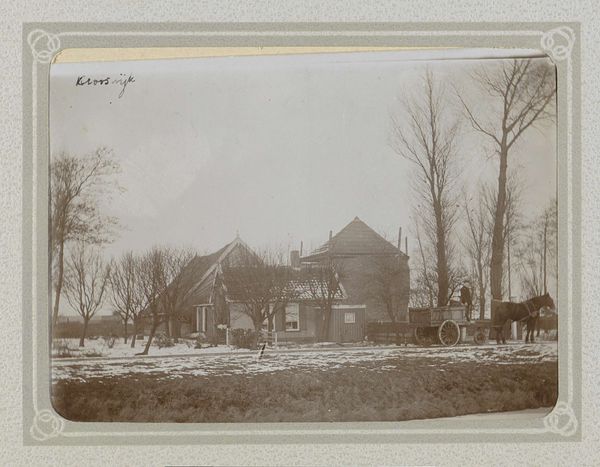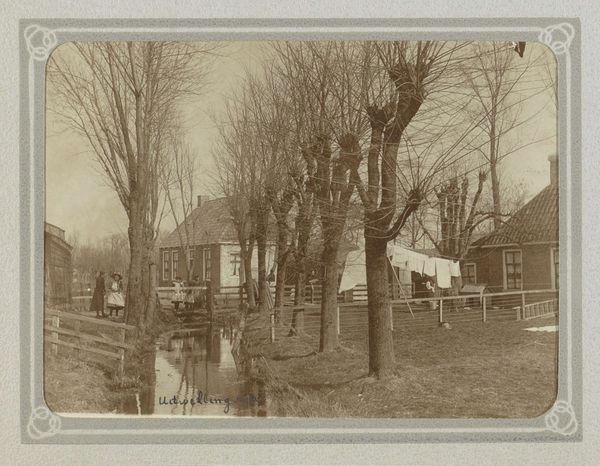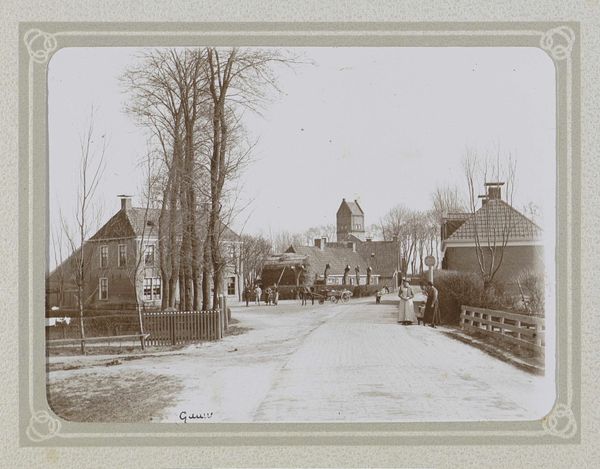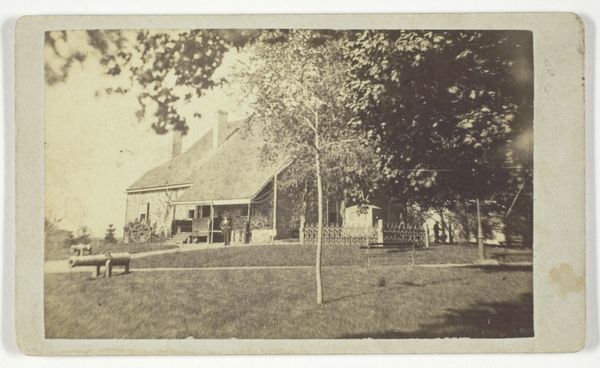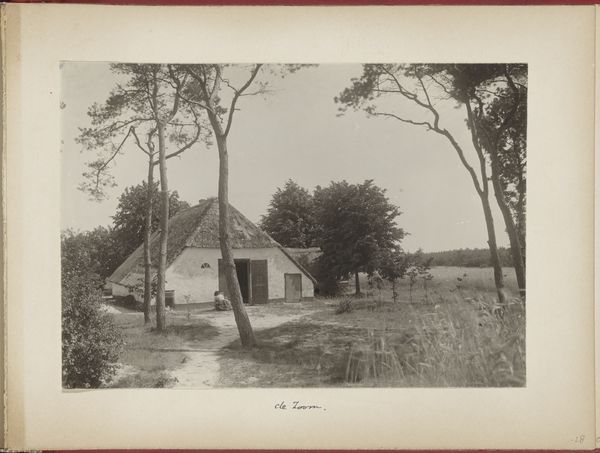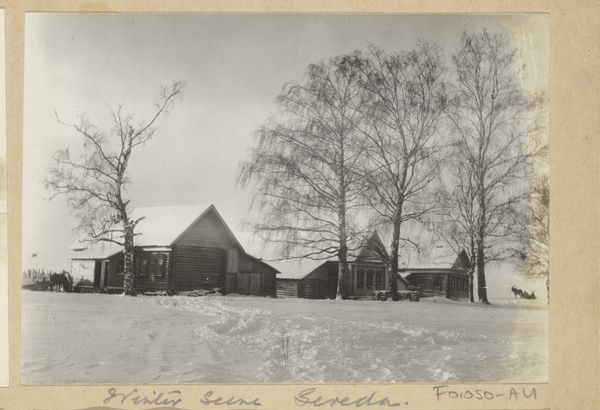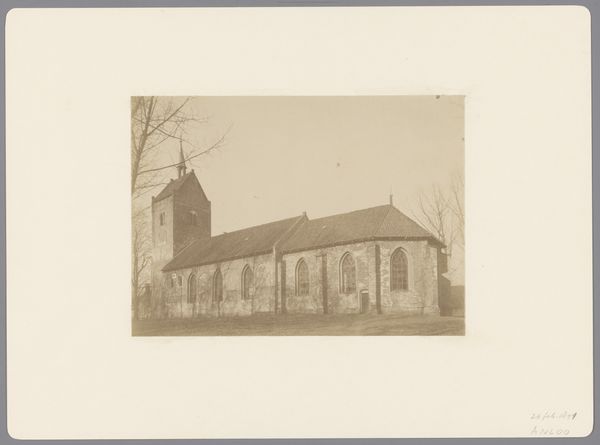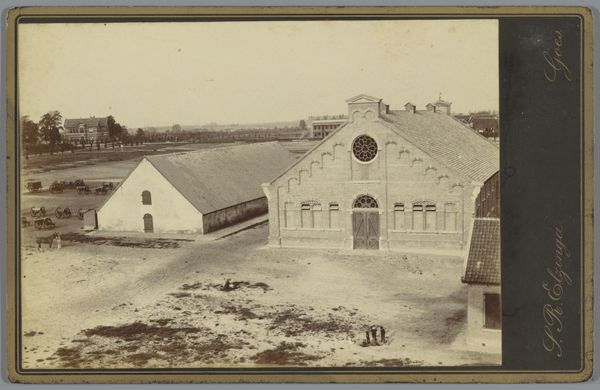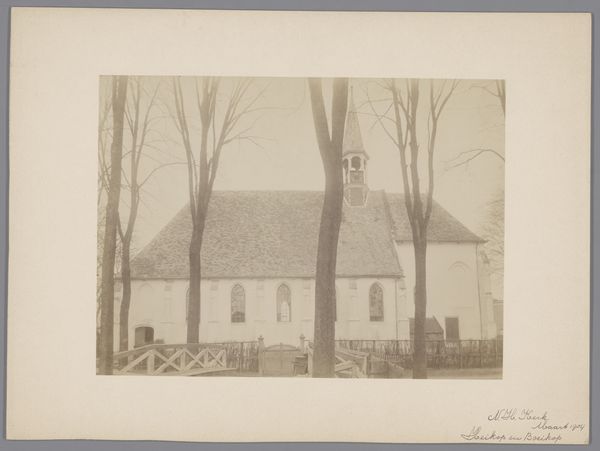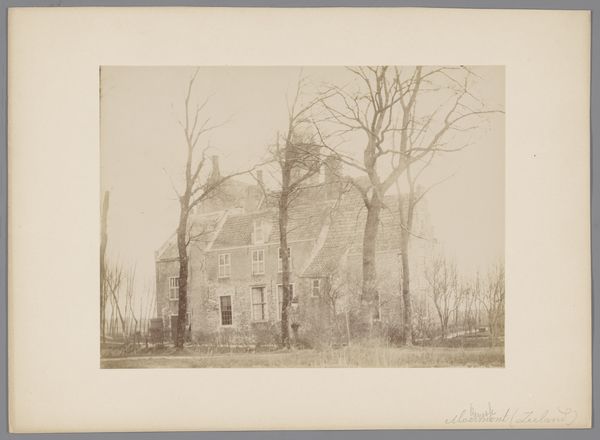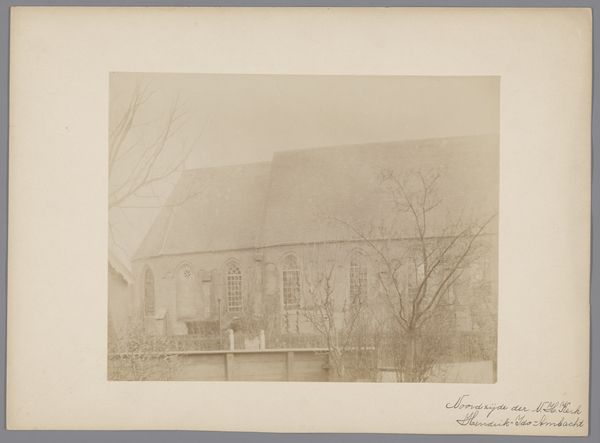
Boerderij met een schuur en een hooiberg aan de Bosweg achter de Kralingse Plas bij Kralingen c. 1905 - 1907
0:00
0:00
photography
#
aged paper
#
toned paper
#
muted colour palette
#
dutch-golden-age
#
pictorialism
#
light coloured
#
landscape
#
photography
#
realism
Dimensions: height 81 mm, width 110 mm
Copyright: Rijks Museum: Open Domain
Curator: We’re looking at a photograph by Folkert Idzes de Jong, titled “Boerderij met een schuur en een hooiberg aan de Bosweg achter de Kralingse Plas bij Kralingen," which roughly translates to "Farm with a barn and a haystack on the Bosweg behind the Kralingse Plas near Kralingen." It was taken somewhere around 1905 to 1907. Editor: My first impression is one of stillness and faded memory, a wisp of a moment caught on aged paper. It whispers of a cold, quiet Dutch winter. Curator: The muted palette really evokes that sense of quiet. Notice how the tones blend almost seamlessly – it's pictorialism in photography; it's trying to emulate painting with its soft focus and careful composition. I am thinking of the light and its impact to expose the photograph. Editor: Absolutely. You see the labor involved too, don't you? Someone prepared the chemicals, tended the farm—consider what this image meant to that society and to de Jong's patrons. The tones suggest specific developing techniques; a choice of materials. How was photography becoming intertwined with agriculture in a region historically sustained by agriculture? Curator: Fascinating questions. De Jong’s artistic intent shines through this photographic technique, one can almost taste that misty, cold air. The skeletal trees reach upwards, echoing the shape of the haystack and the farmhouse roofs, all reaching for a sky that seems… absent. This resonates as almost spiritual, somehow, don’t you think? The relationship of agriculture, spiritual, labor and time... Editor: Spiritual in what way? For me, it prompts thoughts about land ownership, about class and access to resources. The texture of the haystack itself – is it carefully constructed, or haphazard? What kind of labor built that structure? The placement on the land tells about who is controlling the crop and its yield? Curator: True, the texture tells the truth; all of these questions feel valid; though I'm drawn to the emotional resonance, and that feeling of timelessness, which seems intentional on De Jong's part, too. I suspect he wants us to consider more. Editor: Perhaps. Though that interpretation pulls the focus away from those actually shaping this land, and that seems a disservice. Curator: Well, isn’t that the beauty of art – we find our own truths within it. It makes me think. Editor: Indeed; and, hopefully, it makes us act.
Comments
No comments
Be the first to comment and join the conversation on the ultimate creative platform.
